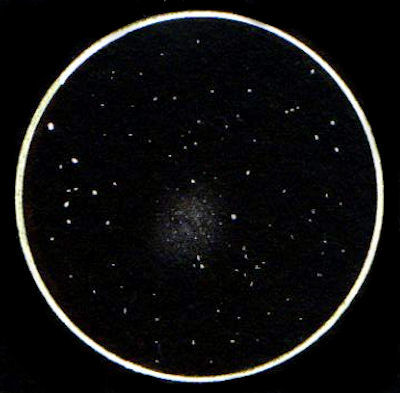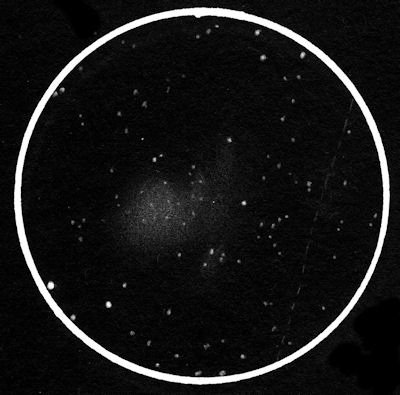 |
 |
|
10.1'' reflector 96 x M71 appears as a relatively faint fuzzy patch at 66x and 96x. Walter Scott Houston says he thinks it is relatively bright and doesn't understand why Messier thought it was fairly dim, but I'd have to side with Messier on that count. It is a VERY loose globular cluster that has very little if any concentration towards the center; I can see why its classification between an open or globular cluster was difficult to determine, it looks very much like a dense open cluster. Measures approximately 8' to 10' across with lots of stars peripherally within the field of view. Bright star at 10 o'clock is 8th magnitude, in conjunction with other similarly bright stars it forms an upside 'y' asterism about 15' west of the cluster. M71 is listed to be relatively close, only 12,000 light years distant. It is also very young and has an intrinsic luminosity that is much lower than most globulars. North at 6 o'clock, East at 3 o'clock
|
10.1'' reflector 144 x Spotted at low power (36x) as a diffuse little fuzzball about 1.5 degrees (midway between) Gamma and Delta Sagittae. At higher power it resolves into 20-30 stars with a background haze of unresolvable stars. Even though this is a globular, it does not seem to have a uniform shape at higher powers - although it does at lower powers, eg. 36x and 64x. I can understand why there was a controversial debate at one time over whether this was a globular or an open cluster. The stars at the center form into 2 or 3 major parallelograms. The east side of the cluster appears to be cleft off from the bigger western portion. The dashed line on the right shows where a satellite traced through the fov. North at 5 o'clock, East at 2 o'clock |